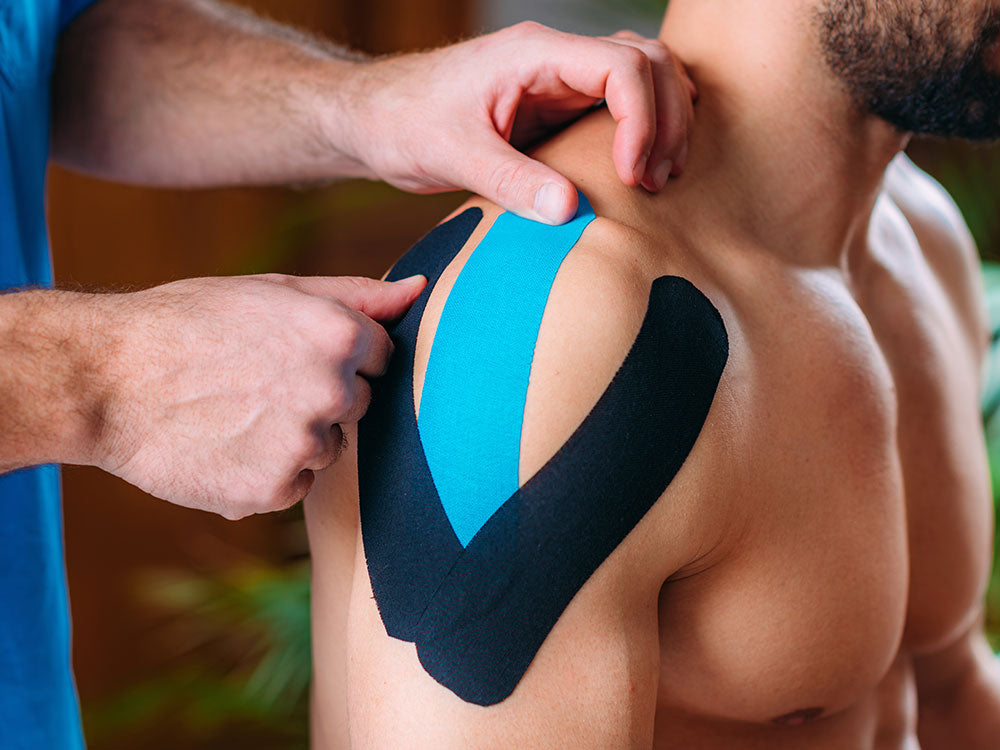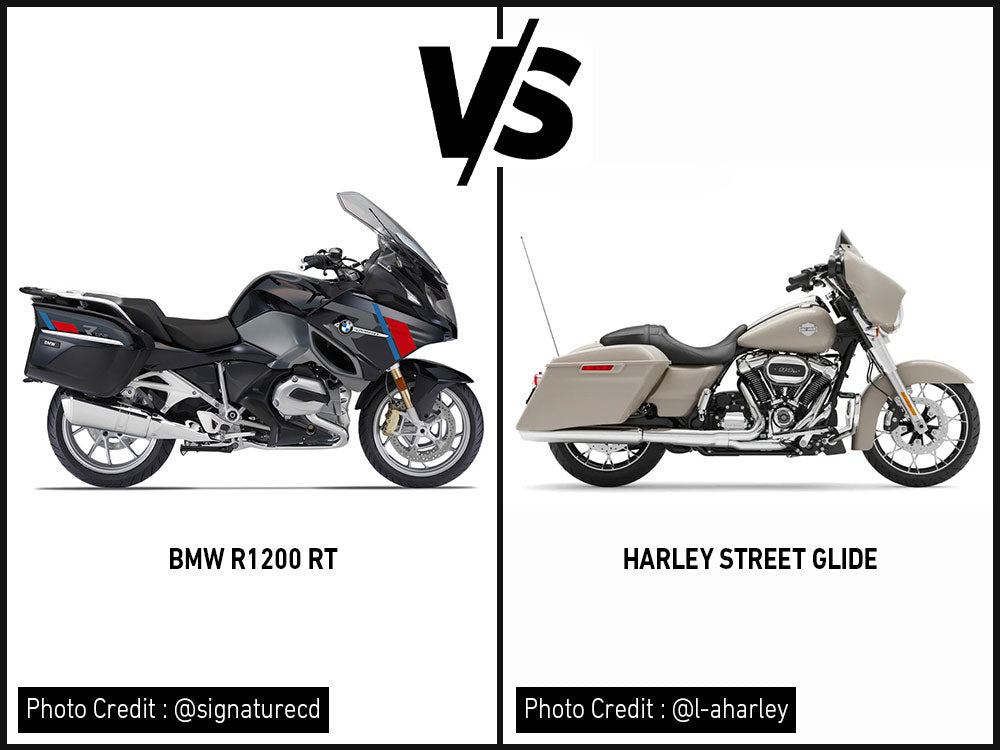Table of Content
Motorcycling is a great way to improve your mental and physical health but longer motorcycle rides can result in muscle fatigue and body pain. Kinesiology tape can help riders reduce muscle pain and ensure more comfortable rides.
This article discusses the importance of kinesiology tape for motorcycle riders when it comes to reducing muscle pain.
1. What is Kinesiology Tape?
Kinesiology tape is a type of therapeutic tape that supports joints and muscles while reducing pain. They are often used by physical therapists, athletes, and sports trainers.
Kinesiology tape is made of a thin, stretchy cloth typically made of cotton. Their elasticity makes it possible to apply the right amount of pressure and support to promote muscle growth and tissue repair.
Kinesiology tape is also waterproof, meaning that the adhesive will not come off even if you become sweaty. For those who might be allergic to latex, there are latex-free and hypoallergenic variants available. Usually, the tape will stay in place for three to four days, even while exercising or taking a shower.
2. Types of Kinesiology Tape
2.1 The I-Strip
The most well-known version is the I-strip. It can be used to apply a variety of patterns, including the lift, fan, and x and y fan patterns.
I-strips can help support muscles, tendons, and ligaments. They can also treat lower back pain, damaged tendons, and rotator cuff muscle dysfunction.
2.2 The X-Strip
The X strip is formed by using two I-strips, being applied to multiple joints, muscles, and large areas.
2.3 The Y-Strip
By stripping off a piece of an X-strip, you will be able to quickly create a Y-strip. Y-strips protect delicate parts of the body, including the back and front of the elbows. They can also be used to help your knee cap recover.
2.4 The Fan Strip
The fan strip is used to treat conditions like lymphedema and help reduce swelling.
2.5 The Lift Strip
The lift strip, also known as the band-aid strip, can be used to loosen knots or repair damaged tissues.
3. How Does Kinesiology Tape Work?
Kinesiology tape is supposed to support the body while allowing blood and other fluids to flow freely through and around injured muscles. Attached to the skin and exerting pressure on injured regions, kinesiology tape helps your injuries stabilize and recover.
With the help of the kinesiology tape, the connective tissue surrounding the injured muscles or tendons will be able to move without causing too much pain or discomfort. Not requiring medication or surgery, this allows blood and lymph fluid to circulate freely, helping to clear and treat any inflammation.
Kinesiology tape is designed to strengthen muscles, improve circulation, promote recovery, lessen the risk of further muscle damage, and allow freedom of movement.
4. How Kinesiology Tape Can Be Helpful for Motorcyclists
4.1 Strengthen Weak Muscles
Kinesiology tape supports joints, muscles, the neurological system, and more when applied correctly. Kinesiology tape may strengthen weakened muscles or even work muscles that have not yet fully or properly developed. Consider applying kinesiology tape on the following regions:
- Shins
- Calves
- Back
- Knees
- Shoulders
- Elbows
- Hamstrings
- Wrists
4.2 For Better Flexibility
Kinesiology tape is flexible so it doesn't restrict your range of motion. Because kinesiology tape is waterproof, it can withstand moisture due to rain or sweating. Because of its strength, you might be able to apply the same strip of kinesiology tape for three to five days without causing any discomfort in your skin or underlying tissue. When competing in special events, road motorcyclists like to wear kinesiology tape to perform at their peak and avoid injury.
4.3 For Better Endurance
Applying kinesiology tape can help reduce fatigue during longer rides. Another benefit of kinesiology tape is better posture. If you exert your muscles correctly, you are less likely to suffer severe injuries that hinder your ability to ride a motorcycle. Kinesiology tape also alleviates pain by putting adequate pressure on the injured areas.
4.4 For Reduced Scarring
Kinesiology tape may help quicken the time it takes for scars after an injury or surgery to disappear. However, it is recommended you talk to a doctor first before starting this form of therapy.
4.5 For Faster Recovery
Kinesiology tape can help improve circulation and reduce inflammation, which helps facilitate a quicker recovery. Increased circulation will ensure faster delivery of nutrients, oxygen, and lactic acid throughout the body.
When kinesiology tape is used, your skin is lifted just enough to leave enough space beneath the skin or in the joint. Depending on how you apply the tape, this could affect how your body receives signals from your sensory neurological system, reducing the intensity of any pain or discomfort.
5. When Should Motorcyclists Not Apply Kinesiology Tape?
Open Wounds: Applying tape to an open wound might result in skin damage or an infection.
Thrombosis in a Deep Vein: A blood clot might become loose if there is an increase in circulation.
Cancer: Could increase blood flow to a malignant tumor.
Removal of lymph nodes: Could result in swelling due to an increase in circulation where a node is absent.
Diabetes: Tape's effects may not be felt if you have reduced sensitivity.
Allergy: Could cause strong allergic reactions if your skin becomes irritated by adhesives.
Delicate Skin: Do not apply tape to skin that is prone to tearing.
6. How to Apply Kinesiology Tape?
Clean the Area: If you have lotions, oils, or moisturizers, apply them to the skin to keep the tape from sticking. Clean and dry the area before applying the tape.
Remove Excessive Hair: Excessive hair can prevent the tape from sticking and can also be painful while removing. Make sure to remove excess hair to improve the grip of the tape.
Measure the Area: Measure the area(s) you want to apply the tape. Due to kinesiology tape being flexible, the average person only needs about 4-5 squares.
Cut the Edges of the Tape: Cut the corners of the tape into a rounded shape. Sharp edges can cause the tape to easily come off.
6.1. Basic Application Guide
Cut the Tape
Measure the area you want to tape, cut the tape to the appropriate length, and cut the corners into a rounded shape. Keep in mind that if you are stretching the tape, its length must be shorter than the length of the area it is being applied.
Remove the Backing
Tear the backing of the tape, and leave two centimeters at both ends to function as anchors.
Apply the Tape
After removing the backing, apply one of the anchors without stretching the tape. Rub the end to apply the adhesive against the skin. Remove the remaining backing and apply the second anchor without stretching the tape.
Remove If Experiencing Allergic Reaction
If you feel any kind of irritation, redness, or itching, remove the tape immediately.
7. How to Remove Kinesiology Tape Safely?
- To loosen the adhesives at both ends, apply some lotion or oil (olive oil or baby oil).
- Remove one end of the tape slowly. Do not pull it.
- Press the skin to help separate it from the tape.
- Pull the tape back rather than pulling it toward you. Press the skin while pulling the tape toward the back.
- Apply a soothing lotion to your skin after removing the tape.
8. Importance of Kinesiology Tape for Motorcyclists
8.1 Injury Prevention
Kinesiology tape can help prevent injuries if applied to weaker joints. They have been useful in preventing injuries to the back, hamstrings, calves, and ankles. One small piece of research has shown that kinesiology tape prevented calf cramps in triathletes.
8.2 Injury Treatment
Kinesiology tape has immediate effects in reducing pain and improves recovery time by reducing pressure from injured tissues and improving muscular strength.
8.3 Improving Performance
Kinesiology tape can help improve muscular strength, cardiovascular fitness, stamina, and efficiency of movement.
Kinesiology tape can also help motorcyclists feel more confident and less worried about being injured, resulting in improved performance.
9. Last Words
During long-distance rides, motorcyclists are more prone to muscle contractions and pain. Kinesiology tape is widely used by therapists to improve athletic performance and treat sports injuries. It can stabilize muscles and muscle, control muscle contractions, and reduces swelling. Kinesiology tape is also referred to as muscle tape due to being effective at reducing muscle pain.













Leave a comment
All comments are moderated before being published.
This site is protected by hCaptcha and the hCaptcha Privacy Policy and Terms of Service apply.